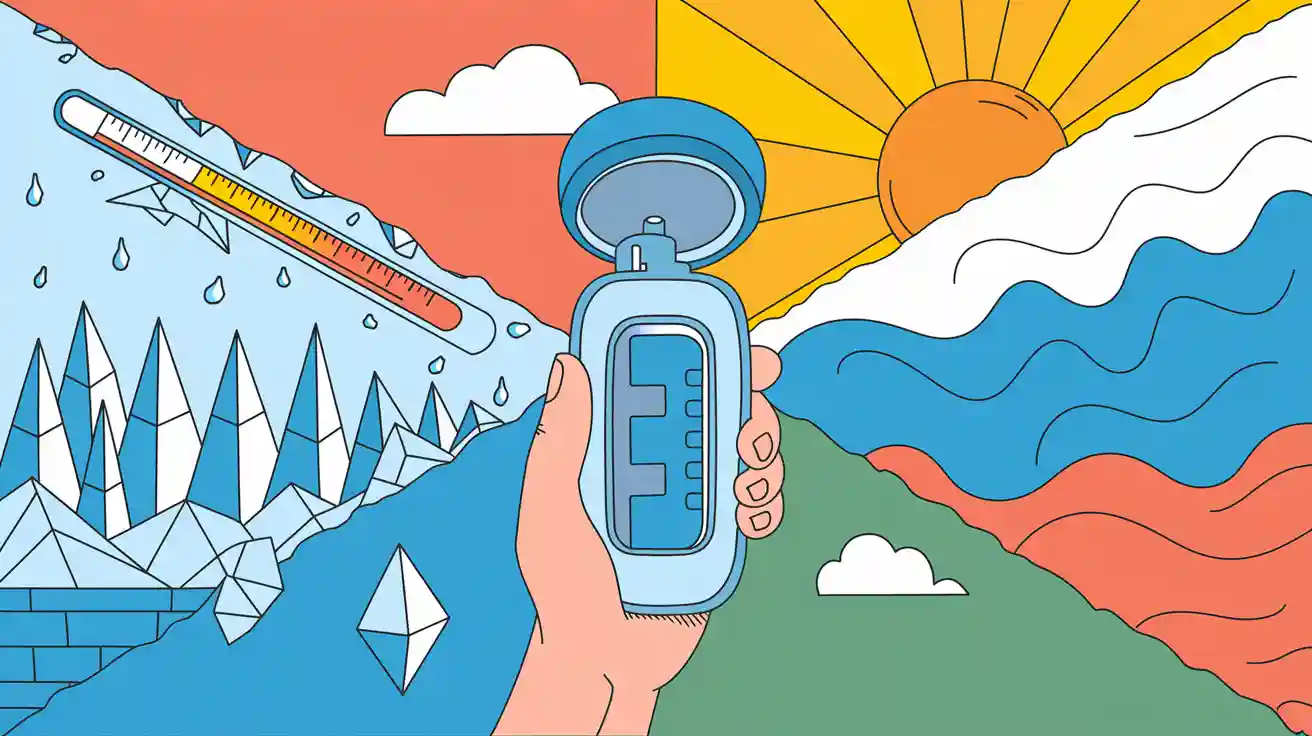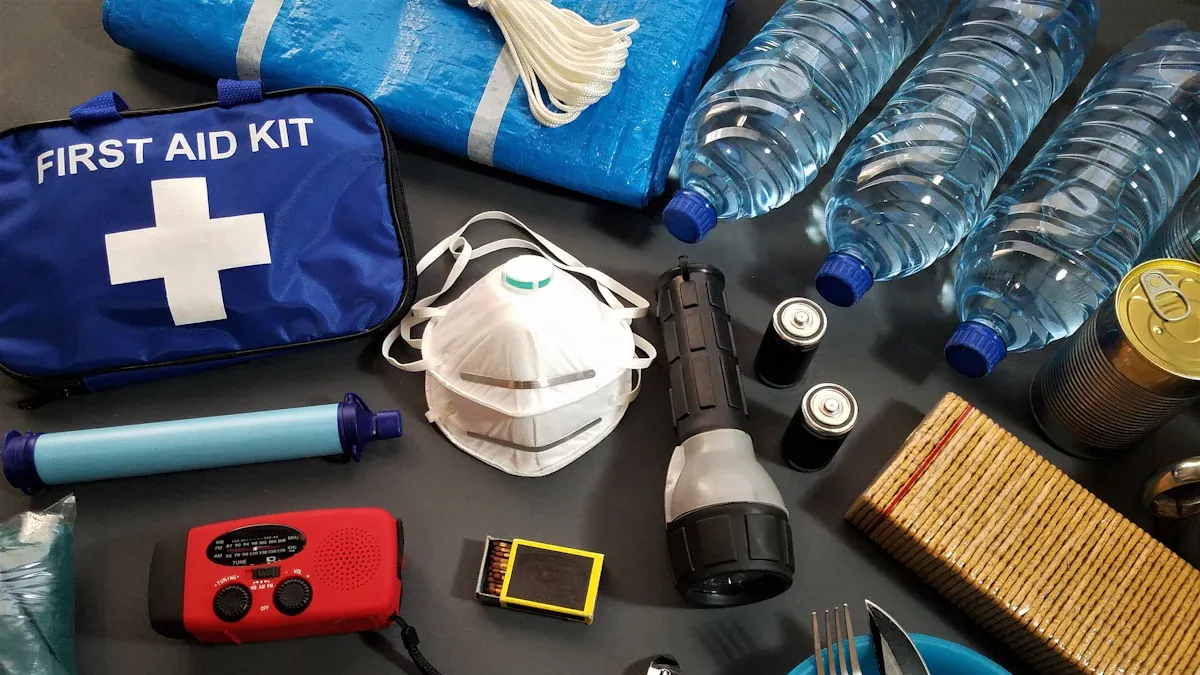
You rely on handheld medical batteries to deliver consistent power, even in harsh environments. Extreme temperature and humidity challenge battery packs, causing rapid degradation and reducing lifespan. When lithium-ion batteries overheat or experience resistance spikes at low temperatures, device safety suffers.
Evidence Point | Description |
|---|---|
Essential Performance | Medical devices must maintain essential performance under low-battery conditions for patient safety. |
Safe Modes | Devices like pacemakers enter safe modes with low batteries, preventing risks. |
Alarm Systems | Drug delivery pumps alert caregivers before power runs out. |
Fewer Surgeries | Longer-lasting batteries mean fewer replacement surgeries. |
Strict Regulations | Regulations prevent hazards like overheating or combustion. |
Batteries are highly sensitive to temperature fluctuations.
Battery performance drops to 50% at -20°C.
A home-use ECG machine experienced a battery fire, showing risks of battery failures.
You must adapt handheld medical batteries to withstand these conditions and protect patients. This article guides you with proven strategies and best practices.
Key Takeaways
Select the right battery chemistry for your application. Different lithium-ion batteries perform uniquely under temperature and humidity stress.
Implement robust design features like thermal management systems. These systems help maintain optimal battery performance in extreme conditions.
Follow strict storage and maintenance protocols. Proper storage conditions and regular inspections can significantly prolong battery life and ensure safety.
Part1: Handheld Medical Batteries and Environmental Risks

1.1 Temperature Effects
You face significant challenges when operating lithium battery packs in environments with extreme temperature. Elevated temperature accelerates chemical reactions inside lithium-ion batteries, causing permanent capacity loss and increasing the risk of thermal runaway. Low temperature slows down these reactions, reducing capacity and discharge rates. Both high temperatures and low temperature compromise battery performance and reliability. Medical devices, robotics, and security systems rely on lithium-ion batteries such as LCO, NMC, LiFePO4, LMO, LTO, solid-state, and lithium metal batteries. Each chemistry responds differently to temperature stress.
Battery Chemistry | Operating Temperature Range | Application Scenario |
|---|---|---|
LCO (Lithium Cobalt Oxide) | 0°C to 60°C | Medical, Consumer Electronics |
NMC (Nickel Manganese Cobalt) | -20°C to 60°C | Medical, Robotics |
LiFePO4 (LFP) | -20°C to 60°C | Medical, Industrial |
LMO (Lithium Manganese Oxide) | 0°C to 60°C | Security Systems |
LTO (Lithium Titanate) | -30°C to 55°C | Infrastructure, Robotics |
Solid-State | -20°C to 60°C | Medical, Industrial |
Lithium Metal | -40°C to 85°C | Medical, Security Systems |
Discharging at high and low temperatures can lead to voltage instability and device failure. You must select the right lithium battery chemistry for your application to ensure optimal battery safety and performance.
1.2 Humidity Challenges
Humidity introduces excess moisture into lithium battery systems. Water molecules infiltrate the electrolyte, forming hydrofluoric acid that accelerates battery degradation. Corrosion of metallic parts, such as the aluminum current collector, weakens structural integrity and increases the risk of failure. High humidity can cause separators to swell or deform, raising the risk of internal short circuits. In medical devices, reliability is critical. You must protect lithium-ion batteries from humidity to maintain battery safety and performance.
1.3 Safety and Performance Impact
Lithium-ion batteries can malfunction in extreme conditions, leading to fires, explosions, and device failure. Elevated temperature causes battery components to decompose, triggering thermal runaway and increasing the risk of rupture. Mechanical abuse during transportation, especially in humid environments, leads to corrosion and short circuits. Stress from electro-chemical cycling impacts capacity and discharge rates. Reducing stress generation promotes long cycle life and improves battery performance. You must monitor lithium battery packs closely to prevent runaway and ensure safety in medical, robotics, and industrial applications.
Part2: Adaptation Strategies for Temperature and Humidity

2.1 Battery Design Enhancements
You must prioritize robust design features to ensure lithium battery packs perform reliably in extreme temperature and humidity. Advanced thermal management systems regulate battery temperature, preventing overheating and maintaining optimal performance. You can integrate energy management systems (EMS) and thermal management systems (TMS) to optimize battery operation, especially in medical and industrial devices. These systems use ultracapacitors to stabilize battery temperature, which extends longevity and reduces lifecycle costs.
Design Feature | Description |
|---|---|
Thermal Management Systems | Advanced cooling and heating mechanisms maintain optimal battery performance in extreme heat or cold. |
Ingress Protection | Enclosures resist environmental intrusions such as moisture and particulate matter. |
Structural Analysis | Ensures structural integrity of the battery enclosure to withstand extreme weather events. |
Fire Suppression Systems | Integrated safety features mitigate fire risk in vulnerable regions. |
Remote Monitoring & Control | Real-time diagnostics and alerts enable proactive maintenance and system health. |
You should select lithium-ion, LiFePO4, lithium-polymer/LiPo, or solid-state batteries based on your application scenario. These chemistries offer different resilience levels to temperature and humidity. For example, lithium-ion batteries provide high energy density and fast charging, while LiFePO4 batteries deliver superior longevity and stability in fluctuating temperature environments. Solid-state batteries offer enhanced safety and reduced thermal risks, making them ideal for medical and robotics sectors.
Tip: Use battery management systems to monitor temperature, voltage, and current in real time. BMS technology helps you prevent thermal runaway and prolong lithium-based batteries.
2.2 Protective Enclosures
Protective enclosures shield lithium battery packs from moisture, temperature fluctuations, and physical impacts. You should choose enclosure materials based on your device’s operating environment and application scenario.
Material Type | Description | Applications |
|---|---|---|
Metal Battery Enclosures | Steel, aluminum, or other durable metals protect against elements and unauthorized access. | Electric vehicles, solar panels, infrastructure, industrial, medical devices |
Plastic Battery Enclosures | Lightweight, impact-resistant ABS, PVC, or polypropylene. | Consumer electronics, medical devices, robotics, security systems |
Ceramic Battery Enclosures | Electrical insulation and high-temperature resistance for specialized applications. | Specialized battery applications |
Fire-Resistant Enclosures | Specialized materials prevent or delay fires from reaching batteries. | Medical, industrial, security systems |
Smart enclosure designs facilitate heat dissipation through natural or forced convection, conduction, or radiation. You must ensure proper ventilation to prevent overheating and maintain battery longevity. In medical and robotics applications, enclosure integrity is critical for device reliability and patient safety.
Inadequate heat dissipation leads to device failure.
Proper enclosure design protects batteries from harsh weather and impacts.
Ventilation and heat management are essential for maintaining battery performance.
2.3 Storage and Usage Best Practices
You can prolong lithium-based batteries by following strict storage and handling protocols. Store batteries in cool, moderately dry conditions with humidity levels below 50%. Avoid direct sunlight and heat sources to prevent temperature spikes. Ensure proper ventilation to prevent hydrogen accumulation and internal damage.
Store lithium-ion batteries in a dry, cool place such as a cupboard or drawer.
Moderate humidity is crucial for battery longevity.
Excessive moisture causes internal damage and short circuits.
Improper storage increases the risk of overheating, thermal runaway, and catastrophic failure. You should avoid continuously charging batteries, as this shortens service life. Do not store batteries in a fully discharged state, which can cause irreversible damage and increase the risk of short circuits.
Do not fully charge batteries; this creates internal stress and may lead to swelling or leakage.
Avoid storing batteries in a fully discharged state.
Maintain optimal battery storage conditions to prolong lithium-based batteries.
Note: Manufacturers test batteries in climate chambers, cycling between -40°C and +85°C with 95% humidity to evaluate seal integrity, moisture ingress, insulation degradation, and electrolyte stability. These tests ensure battery packs meet strict industry standards for medical, robotics, and security system applications.
2.4 Maintenance Recommendations
You must implement regular maintenance protocols to ensure battery safety and longevity in extreme temperature and humidity. Schedule monthly inspections to identify environmental damage early. Clean battery terminals and check for signs of corrosion or swelling. Use temperature management systems, such as active cooling and heating elements, to maintain optimal battery temperature.
Store batteries in a cool, dry place and control humidity to prevent damage.
Keep warehouse temperature at 20±5°C (68±9°F) and below 75% relative humidity.
Use sealed enclosures with desiccants to protect against moisture.
Select corrosion-resistant materials for battery components.
Healthcare facilities should use temperature-compensated charging and install thermal sensors on battery cells. Pair remote terminal units (RTU) with smart battery modules to monitor internal resistance and enhance warranty claims. Train staff to understand electrolyte types, components, and ampere-hour ratings. Designate maintenance areas with protective wear and proper ventilation.
Store batteries at safe temperatures (68 to 86°F).
Conduct routine inspections and check charge settings.
Avoid discharging batteries beyond 80 percent to prolong lithium-based batteries.
Call to Action: For custom consultation on lithium battery pack adaptation, click here to connect with our experts.
Recent studies show that adaptive battery thermal management systems, powered by artificial intelligence, optimize heat dissipation and improve battery longevity in extreme conditions.
You can maximize battery longevity by using advanced battery management systems and robust enclosures.
Advanced BMS solutions deliver precise state of charge and health calculations, extending battery longevity and reducing fire risks.
Engaging healthcare professionals in adaptation practices increases battery longevity and patient safety.
Customizing BMS for portable diagnostic devices and life-support equipment ensures battery longevity and reliability across medical, robotics, and industrial sectors.
Structured adaptation strategies help hospitals maintain battery longevity without losing essential features.
Proper storage and maintenance protocols further enhance battery longevity, even with rising supply chain costs.
You should seek custom battery solutions for lithium battery packs.
FAQ
How do you ensure lithium battery packs operate safely in extreme environments?
You should use advanced thermal management and sealed enclosures. Large Power offers custom battery consultation for adaptation.
What maintenance protocols improve battery reliability in medical and industrial devices?
Schedule monthly inspections, clean terminals, and monitor temperature. Use remote diagnostics for early detection.
Tip: Always follow safe handling procedures to prevent damage.
Which lithium battery chemistries perform best in high humidity and temperature?
LiFePO4, solid-state, and lithium metal chemistries provide superior stability. You should select based on your application scenario and environmental risks.






